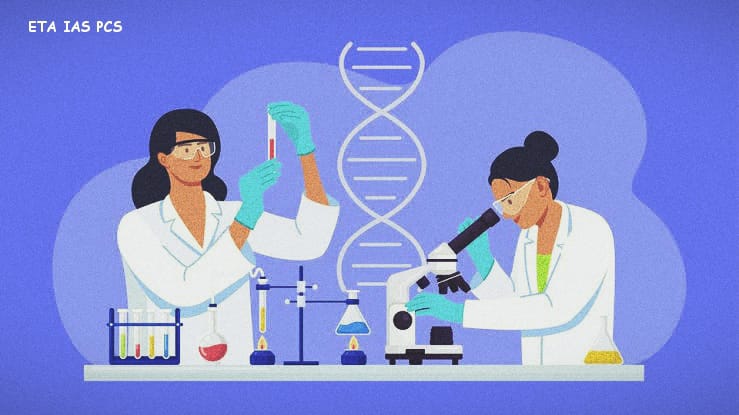CONTEXT: India’s ongoing efforts to advance in the fields of science and technology necessitate a commitment to the complete inclusion of women in this endeavor.

Challenges Faced by Women in Science
1. Limited Access to Quality Education:
- In many regions, girls face limited access to quality education, particularly in rural and marginalized areas, which restricts their opportunities to pursue science.
2. Gendered Societal Norms:
- Social expectations often discourage girls from pursuing STEM education, reinforcing the stereotype that science is a male-dominated field.
3. Hiring and Promotion Bias:
- Women frequently encounter biased hiring practices that limit their access to high-impact research and leadership roles, hindering their career progression in science.
4. The Matilda Effect:
- The Matilda Effect refers to the tendency to downplay or overshadow women’s contributions to science, often in favor of their male colleagues, diminishing their recognition and advancement.
5. Lack of Role Models:
- The absence of successful women in senior leadership roles in science serves as a deterrent, as younger women have fewer role models to inspire their STEM careers.
6. Harassment and Discrimination:
- Academic and professional environments in STEM fields are often hostile, with women facing harassment and discrimination, pushing many out of the field.
7. High Attrition Rates:
- Studies show that women in STEM fields experience higher dropout rates due to challenges such as work-life balance issues, non-inclusive workplaces, and a lack of institutional support.
The Situation of Indian Women in Science
A survey conducted across 98 institutions in India during 2020-21 revealed that women faculty members represented only 17% of the total faculty, with the following distribution:
- 23% in Biology
- 8% in Engineering
Underrepresentation in Higher-Ranked Institutions:
- Women’s representation in higher-ranked institutions and senior faculty roles remains critically low. Women frequently face exclusion from career-enhancing opportunities such as conferences, funding, and leadership positions, which limits their career progression.
Importance of Retaining Women in Science
Fostering Innovation:
- Diverse teams bring a variety of perspectives, leading to innovative solutions and significant discoveries. Retaining women in science can enhance the scope of research and development.
Encouraging Role Models:
- Women in leadership roles serve as role models for young girls, motivating them to pursue STEM careers. Having visible women leaders is crucial in challenging gender stereotypes and reducing dropout rates in STEM fields.
Enhancing Female Labour Force Participation Rate (FLFPR):
- Increasing women’s participation in science and technology is key to achieving the ambitious goal of 70% female involvement in economic activities by 2047, contributing to overall economic development.
Government Initiatives to Support Women in Science
Gender Advancement for Transforming Institutions (GATI):
- Launched in 2020 by the Department of Science and Technology (DST), GATI aims to foster gender inclusivity within STEM disciplines. The program promotes the creation of a gender-equitable academic and professional environment for women in science.
Women in Science and Engineering – Knowledge Involvement in Research Advancement through Nurturing (WISE-KIRAN):
- The WISE-KIRAN initiative provides funding, mentorship, and career support to women scientists. Its objective is to enhance women’s participation in research and STEM development through comprehensive support systems.
Policy Recommendations for Retaining Women in Science
Institutional Changes:
Flexible Work Arrangements:
- Introduce flexible work hours, remote working, and part-time employment options to accommodate women, helping them balance their professional and personal responsibilities.
Affordable Daycare Facilities:
- Provide affordable daycare facilities within institutions to support working mothers, ensuring they can maintain a healthy work-life balance.
Work-Life Balance Policies:
- Formulate policies that assist women in balancing work and family responsibilities, creating a more supportive and inclusive environment.
Increasing Visibility and Representation:
Promoting Achievements:
- Highlight the achievements of women scientists through awards, public platforms, and media to increase their visibility and inspire others.
Addressing Gender Discrimination:
- Monitor and eliminate gender discrimination in hiring, funding, and promotions, ensuring equal opportunities for women in all aspects of their careers.
Leadership Pathways:
- Create clear pathways for women to occupy leadership and decision-making roles, promoting gender equity at all levels of the scientific community.
Supporting Career Re-Entry:
Removing Age Restrictions:
- Eliminate age-restrictions on research grants to accommodate women who have taken career breaks, ensuring they have access to funding and opportunities.
Fellowship Programs for Career Returnees:
- Offer fellowship programs for women returning to research after family or personal breaks, providing them with the resources to reintegrate into the scientific workforce.
Mentorship Networks:
- Establish strong mentorship networks for women at all career stages to guide them in navigating their professional development and career progression.
